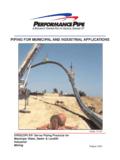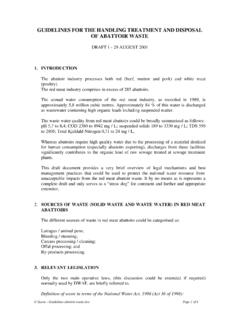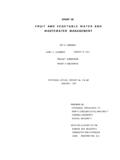Transcription of DEPARTMENT OF PUBLIC HEALTH AND …
1 DEPARTMENT OF PUBLIC HEALTH AND ENVIRONMENT. water quality control commission CHERRY CREEK RESERVOIR control REGULATION. 5 CCR 1002-72. ADOPTED: November 6, 1985. EFFECTIVE: December 30, 1989. AMENDED: May 1, 1989. EFFECTIVE: June 30, 1989. AMENDED: June 1, 1992. EFFECTIVE: June 30, 1992. AMENDED: August 14, 1995. EFFECTIVE: September 30, 1995. AMENDED: July 14, 1997. EFFECTIVE: August 30, 1997. TRIENNIAL: September 9, 1997. AMENDED: November 3, 1997. EFFECTIVE: December 30, 1997. EMERGENCY AMENDED: January 12, 1998. AMENDED: April 13, 1998. EFFECTIVE: May 30, 1998. TRIENNIAL: March 14, 2000. AMENDED: August 13, 2001. EFFECTIVE: September 30, 2001. TRIENNIAL: September 8, 2003.
2 AMENDED: November 8, 2004. EFFECTIVE: December 30, 2004. AMENDED: August 10, 2009. EFFECTIVE: January 1, 2010. DEPARTMENT OF PUBLIC HEALTH AND ENVIRONMENT. water quality control commission CHERRY CREEK RESERVOIR control REGULATION. 5 CCR 1002-72. AUTHORITY. The water quality control commission is authorized to promulgate this control Regulation pursuant to sections 25-8-202(1)(c) and 25-8-205, DEFINITIONS. See the Colorado water quality control Act and other water quality control commission regulations for additional definitions. 1. "Authority" means the Cherry Creek Basin water quality Authority established pursuant to section , et seq., 2. "Background sources" include concentrations to the reservoir that are not the result of human- related activities, such as groundwater in its natural condition and precipitation on the reservoir.
3 3. "Best management practice (BMP)" means the best schedules of activities, prohibitions or practices, operation and maintenance procedures, and other management practices to prevent or reduce the introduction of pollutants into state waters. BMPs include, but are not limited to, structural and nonstructural controls, treatment requirements, and practices to control plant site runoff, spillage or leaks, sludge or waste disposal, or drainage from raw material storage. BMPs can be applied before, during, and after pollution-producing activities. 4. "Cherry Creek watershed" consists of all lands that drain into the following: (a) the mainstem of Cherry Creek, from the source of East and West Cherry Creek to the inlet of Cherry Creek Reservoir (Segment 1), including alluvial groundwater; (b) Cherry Creek Reservoir (Segment 2), including alluvial groundwater; (c) all tributaries to Cherry Creek, including wetlands and alluvial groundwater, from the sources of East and West Cherry Creeks (parts of Segment 4); and all lakes and reservoirs in the Cherry Creek Reservoir watershed (Segment 5, in part) as described in the Classifications and Numeric Standards - South Platte River Watershed, Regulation #38 (5.)
4 CCR 1002-38). The Cherry Creek Watershed is delineated in Figure 1 attached to this regulation. 5. "Concentration" for the purposes of this regulation only, means the total phosphorus concentration in discharges related to existing or future non-point source and regulated stormwater discharges, wastewater facility sources, industrial process wastewater sources, individual sewage disposal systems and background sources. 6. "Concentration-Based control of Phosphorus" means the flow-weighted concentration of total phosphorus in the inflow to Cherry Creek Reservoir that is intended to result in the attainment of water quality standards for Cherry Creek Reservoir. 7. "Designated water quality management agency" means the agency identified by the Denver Regional Council of Governments Metro Vision Clean water Plan and by the Governor to implement specific control recommendations.
5 1. 8. "Direct discharge" means any discharge to any surface waters or subsurface waters, including discharge from rapid infiltration basins, related to Cherry Creek or its tributaries, except by land disposal or land treatment. "Direct discharge" does not include discharges from regulated stormwater and background sources. 9. "Disturbed areas" means any site, area or lands in the Cherry Creek watershed where a land disturbance has commenced but has not been permanently stabilized and/or revegetated. 10. "Division" means the water quality control Division of the Colorado DEPARTMENT of PUBLIC HEALTH and Environment. 11. "Enhanced BMP" means a BMP that uses water quality capture volume as the design basis and incorporates one or more of the following treatment technologies: retention, wetlands, filtration, infiltration, or other technology with similar capabilities to reduce phosphorus concentrations in the discharge.
6 12. "Effluent limitation" means any restriction or prohibition established pursuant to this regulation, the Colorado water quality control Act, or the federal act on quantities, rates, and concentrations of chemical, physical, biological, and other constituents which are discharged from point sources into state waters, including, but not limited to, standards of performance for new sources, toxic effluent standards, and schedules of compliance. 13. "Flow-weighted phosphorus concentrations" means the total external load, including precipitation, groundwater, stream flow, and ungaged runoff, divided by total inflow volume. 14. "Individual home construction" means any land disturbance or development for a single home, not including land disturbances for roads, road gutters or road improvements, that disturbs less than one acre of land and where the Owner of the single home holds a permit for construction of only one dwelling within the subdivision, if any, containing the single home.
7 15. "Individual sewage disposal system (ISDS)" means a system or facility for treating, neutralizing, stabilizing, or disposing of wastewater that is not a part of or connected to a wastewater facility, as defined in this section. 16. "Industrial process wastewater sources" include, but are not limited to, facilities, or activities that discharge non-domestic process wastewater, such as effluent from construction dewatering and sand and gravel mining or any water that, during manufacturing or processing, comes into direct contact with or results from the production or use of any raw material, intermediate product, finished product, byproduct, or waste product. "Industrial process wastewater sources" do not include facilities or activities that discharge into a wastewater facility, as defined in this section.
8 For the purpose of this regulation only, such sources also do not include such activities as hydrostatic testing operations, hydrant flushing, water main repairs, drinking water treatment facilities, dewatering or foundation draining, and swimming pool drainage. 17. "Land application" is any discharge being applied directly to the land for land disposal or land treatment and does not include discharges to surface waters, even if such waters are subsequently diverted and applied to the land. 18. "Land application return flow factor" means the return flow factor for land application sites in an augmentation plan decreed by the Colorado District Court, water Division, or, where an augmentation plan has not been decreed, a study similar to that which would be required to support an augmentation plan.
9 19. "Land disposal" means any discharge of pollutant-containing waters being applied to land for which no land treatment is intended. 2. 20. "Land disturbance" means a man-made change in the natural cover or topography of the land, including grading, cutting and filling, building, paving, excavating and any other activities that may result in or contribute to soil erosion or sedimentation in waters or discharge of pollutants, as identified in section (b) of this regulation, except individual home construction, as defined in this section. 21. "Land treatment" means any discharge of pollutant-containing waters being applied to the land for the purpose of treatment.
10 22. "Local government" means a city, town, county, district, association, or other PUBLIC body created by or under State law and having jurisdiction over disposal of sewage, industrial wastes, or other wastes, or a designated and approved management agency under section 208 of the federal Clean water Act. 23. "Municipal separate storm sewer system" or "MS4" means a conveyance or system of conveyances (including roads with drainage systems, municipal streets, catch basins, curbs, gutters, ditches, man-made channels, or storm drains): (a) owned or operated by a State, city, town, county, district, association, or other PUBLIC body (created by or pursuant to State law) having jurisdiction over disposal of sewage, industrial wastes, stormwater, or other wastes, including special districts under State law such as a sewer district, flood control district or drainage district, or similar entity, or a designated and approved management agency under section 208 of the CWA that discharges to state waters.







